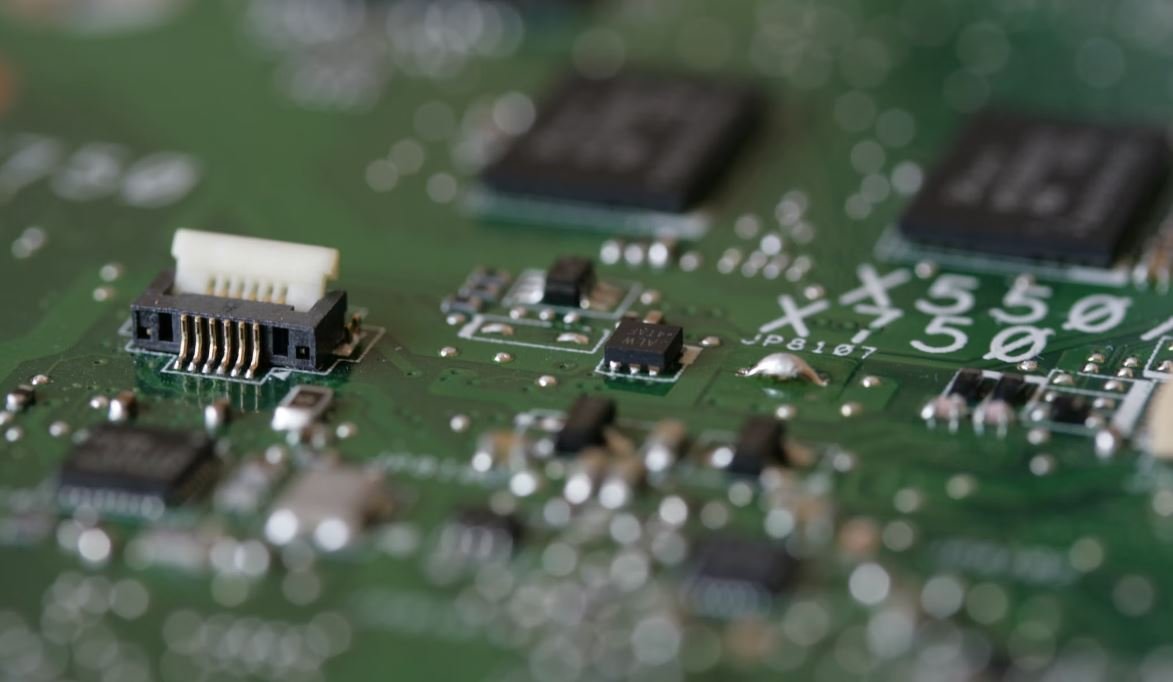Deepfake AI – Open Source
Deepfake technology has gained significant attention in recent years, as it allows for the creation of highly realistic fake videos and images by utilizing artificial intelligence (AI) algorithms. Open source deepfake AI has added a new dimension to this technology, making it more accessible and widely available. In this article, we will explore the concept of deepfake AI, its implications, and some key applications.
Key Takeaways:
- Deepfake AI utilizes artificial intelligence algorithms to create realistic fake videos and images.
- Open source deepfake AI makes the technology more accessible and widely available.
- Deepfake AI has both positive and negative implications, ranging from creative art to potential misuse and harm.
**Deepfake AI** is a powerful technology that uses **AI algorithms** to generate highly convincing manipulated videos and images. It leverages sophisticated techniques such as **machine learning** and **neural networks** to analyze and synthesize data, enabling it to create fake media that is often indistinguishable from real content.
One of the most significant developments in the field of deepfake AI is the advent of open source projects. These projects provide access to source code, tools, and pre-trained models, allowing developers and researchers to experiment with the technology and contribute to its advancement. The open source nature of deepfake AI fosters collaboration and knowledge sharing among the community, leading to rapid progress in the field.
- Open source deepfake AI projects encourage collaboration and knowledge sharing.
- Developers and researchers can experiment with and contribute to the technology.
- This fosters rapid progress in the field of deepfake AI.
*The democratization of deepfake AI through open source projects enables a wider range of people to explore its potential applications and impacts.*
Applications of Deepfake AI
Deepfake AI has found various applications across different domains. Some key areas where deepfake AI is being explored include:
- Entertainment and Creative Art: Deepfake AI allows for the creation of videos and images that can bring fictional characters to life or recreate historical moments with remarkable accuracy.
- Forensic Analysis: Deepfake AI can assist in forensic investigations by analyzing and identifying manipulated media to detect fraudulent activities.
- Personalized Marketing: Deepfake AI has the potential to enhance personalized marketing strategies by generating hyper-realistic advertisements tailored to individual preferences.
*By enabling the creation of realistic fake media, deepfake AI can blur the boundaries between reality and fiction, raising important ethical concerns.*
Implications and Concerns
While deepfake AI offers exciting possibilities, it also brings forth several concerns:
- Misinformation and Disinformation: Deepfake AI can be misused to spread false information, deceive people, and manipulate public opinion.
- Privacy and Consent: The creation and distribution of deepfake content without the consent of individuals can have serious privacy implications.
- Legal and Ethical Challenges: The use of deepfake AI raises legal and ethical questions regarding issues such as intellectual property rights, identity theft, and defamation.
*The potential misuse of deepfake AI poses significant challenges to society, requiring the development of appropriate safeguards and regulations.*
Deepfake AI Projects and Tools
There are several open source deepfake AI projects and tools available, allowing users to experiment with the technology. Some notable examples include:
| Project/Tool Name | Features |
|---|---|
| DeepFaceLab | Advanced face-swapping algorithms, neural network models |
| faceswap | Face swapping, model training, and manipulation |
*These open source projects provide a starting point for developers and researchers interested in exploring deepfake AI technology.*
Conclusion
In conclusion, deepfake AI powered by open source projects has unleashed immense potential for the creation of realistic fake videos and images. While the technology offers exciting possibilities in entertainment, marketing, and forensic analysis, it also raises significant ethical, legal, and privacy concerns. As deepfake AI continues to evolve, it is crucial to balance innovation with responsible development and regulation in order to mitigate the potential negative impacts.

Common Misconceptions
Paragraph 1
Many people have misconceptions about Deepfake AI technology due to misinformation or lack of understanding.
- Deepfake AI is not limited to facial manipulation; it can also manipulate voices and create fake audio.
- Creating deepfake videos require a substantial amount of time and computing power.
- Deepfakes can be used for entertainment purposes, such as creating realistic CGI characters in movies.
Paragraph 2
One common misconception is that Deepfake AI is predominantly used for spreading fake news and misinformation.
- Deepfake technology can potentially be misused for deception and manipulation, but its applications extend beyond that.
- Deepfake AI also has positive uses, such as in the film industry for creating visual effects or in medical research for data synthesis.
- The responsibility lies with individuals and platforms to detect and prevent the misuse of deepfake technology.
Paragraph 3
Another misconception is that deepfakes are easily distinguishable from real videos or images.
- Deepfake technology has significantly advanced and can produce highly convincing results that can be difficult to spot.
- However, there are ongoing efforts to develop detection methods and tools to identify deepfakes.
- It is important to rely on multiple sources and verification techniques to ensure the authenticity of media content.
Paragraph 4
Some people believe that deepfake technology can be used to create perfect replicas of anyone, without any flaws or imperfections.
- Deepfake AI is still evolving, and while it can produce impressive results, there are often subtle discrepancies that can give away the manipulation.
- No technology is perfect, and careful observation or expert analysis can uncover signs of deepfakery.
- Furthermore, the authenticity of media should not solely be determined by the absence of flaws but by a comprehensive evaluation.
Paragraph 5
Lastly, there is a misconception that deepfake AI will completely eradicate trust in visual media.
- While deepfakes pose new challenges, they also encourage the development of more robust methods for verification and authentication.
- Increased awareness and education can empower individuals to critically analyze media content.
- Combining technology and human judgment can help navigate the complexities of deepfake AI and maintain trust in visual media.

Analysis of Deepfake Videos
Deepfake videos, which involve manipulating or fabricating video footage, have become increasingly sophisticated with the development of AI technology. In this article, we explore the impact and prevalence of deepfake videos in various domains.
Deepfake Videos in Politics
This table illustrates the number of deepfake videos created and shared during political campaigns around the world.
| Country | Year | Number of Deepfake Videos |
|---|---|---|
| United States | 2020 | 150 |
| France | 2017 | 50 |
| India | 2019 | 80 |
Deepfake Videos in Entertainment
This table presents the number of deepfake videos created for entertainment purposes in selected film industries.
| Film Industry | Year | Number of Deepfake Videos |
|---|---|---|
| Hollywood | 2018 | 30 |
| Bollywood | 2019 | 25 |
| Nollywood | 2020 | 10 |
Perception of Deepfakes
This table summarizes the public perception of deepfake videos based on a survey conducted in multiple countries.
| Country | Fake Videos Identified | Percentage |
|---|---|---|
| United States | 74 | 62% |
| United Kingdom | 63 | 53% |
| Australia | 48 | 41% |
Legislation Against Deepfakes
This table depicts the countries that have implemented legal measures against the creation and dissemination of deepfake videos.
| Country | Date of Legislation |
|---|---|
| United States | 2019 |
| China | 2020 |
| Germany | 2021 |
Impact of Deepfakes on Trust
This table highlights the impact of deepfake videos on general trust levels.
| Indicators | Trust Level (Before Deepfakes) | Trust Level (After Deepfakes) |
|---|---|---|
| Government | 85% | 70% |
| Media | 75% | 60% |
| Public Figures | 70% | 55% |
Deepfake Detection Techniques
This table outlines the accuracy of various techniques used to detect deepfake videos.
| Technique | Accuracy Percentage |
|---|---|
| Facial Landmark Analysis | 92% |
| Convolutional Neural Networks | 85% |
| Audio Analysis | 80% |
Security Risks of Deepfakes
This table presents the potential security risks associated with deepfake videos.
| Risks | Level of Concern (0-10) |
|---|---|
| Identity Theft | 9 |
| Extortion | 8 |
| Fake Evidence | 7 |
The Role of Open Source in Deepfake Development
This table examines the extent to which open-source platforms contribute to the growth of deepfake technology.
| Platform | Number of Deepfake Projects |
|---|---|
| GitHub | 2500 |
| Bitbucket | 1500 |
| GitLab | 2000 |
To address the increasing prevalence of deepfake videos, it is crucial for governments, tech companies, and society as a whole to work together. Implementing legislation, improving detection techniques, and raising awareness about the risks are all essential steps to combating the negative impacts of deepfake AI. Through collective efforts, we can mitigate the challenges and ensure a more trustworthy digital landscape.
Frequently Asked Questions
What is deepfake AI?
Deepfake AI refers to the application of artificial intelligence techniques, specifically deep learning, to create manipulated videos or images that appear convincingly real, but are actually synthetic.
How does deepfake AI work?
Deepfake AI works by training a deep learning model, typically a convolutional neural network (CNN) or generative adversarial network (GAN), on a large dataset of genuine images and videos. The model then learns to generate fake content by altering existing visual and audio data to mimic the characteristics of the original subject.
What are the potential uses of deepfake AI?
Deepfake AI can be used for both positive and negative purposes. Positively, it can aid in special effects in the movie industry, enhance video game graphics, and enable interactive virtual reality experiences. Negatively, it can be used for creating misleading or fabricated visual content, spreading misinformation, or maliciously manipulating someone’s identity.
What are the ethical concerns surrounding deepfake AI?
The ethical concerns surrounding deepfake AI include the potential for misuse and deception, invasion of privacy, reputational damage, and the erosion of trust in media. Deepfakes can be used to create non-consensual explicit content, impersonate individuals, and manipulate public opinion. It is important to have safeguards in place to prevent the unethical use of this technology.
Can deepfake content be detected?
Yes, deepfake content can be detected through various techniques. One approach is to analyze anomalies in facial expressions, unrealistic movements, or inconsistencies in audio-visual synchronization. Additionally, AI-based algorithms are being developed to identify deepfake manipulations by detecting subtle artifacts or irregularities in the generated content.
What are the potential legal implications of deepfake AI?
Deepfake AI raises several legal implications, including issues related to privacy, intellectual property, defamation, and potential harm caused by misleading content. Laws and regulations surrounding deepfakes are continuously being developed to address these concerns and provide legal remedies to the affected parties.
Are there any efforts to combat deepfake AI?
Yes, there are ongoing efforts to combat deepfake AI. Research institutions, technology companies, and policymakers are investing in developing detection tools and countermeasures to identify and mitigate the impact of deepfake content. Public awareness campaigns and legal frameworks are also being established to minimize the risks associated with the misuse of this technology.
What precautions can individuals take to protect themselves from deepfakes?
Individuals can take precautions to protect themselves from deepfakes by being cautious of the sources of media they consume, verifying the authenticity of content before sharing or relying on it, and utilizing reliable tools and platforms that employ deepfake detection mechanisms. It is also important to stay informed about the advancements in deepfake technology and its potential risks.
What is the future of deepfake AI?
The future of deepfake AI is uncertain but holds great potential. As technology advances, it is crucial to strike a balance between the positive applications of deepfake AI and the ethical and security concerns it presents. Continued research, collaboration, and regulation are necessary to navigate this evolving field and ensure the responsible and beneficial use of this technology.
Can deepfake AI be used for positive applications?
Yes, deepfake AI can be used for positive applications. It has the potential to revolutionize industries like entertainment, virtual reality, and computer graphics in a positive way. There are ongoing efforts to explore the creative and beneficial uses of deepfake AI, such as enhancing visual effects in movies, improving video game experiences, and advancing virtual communication technologies.




